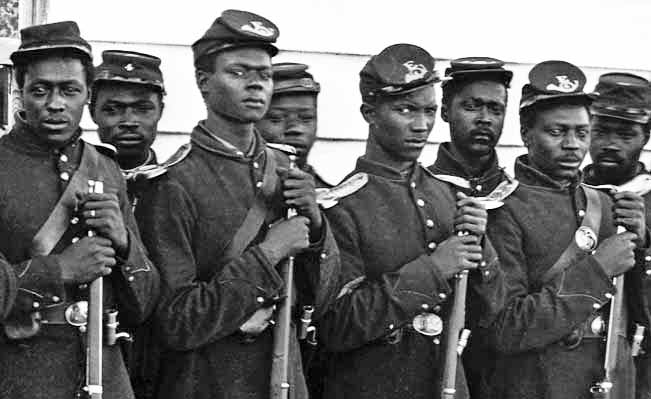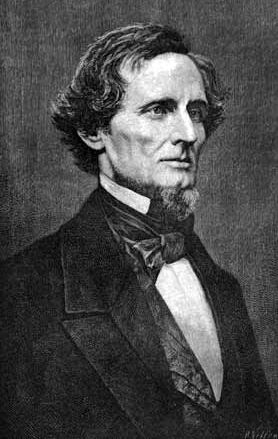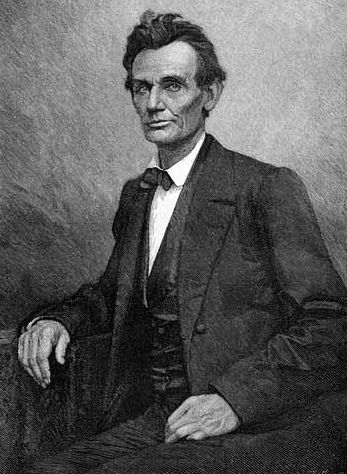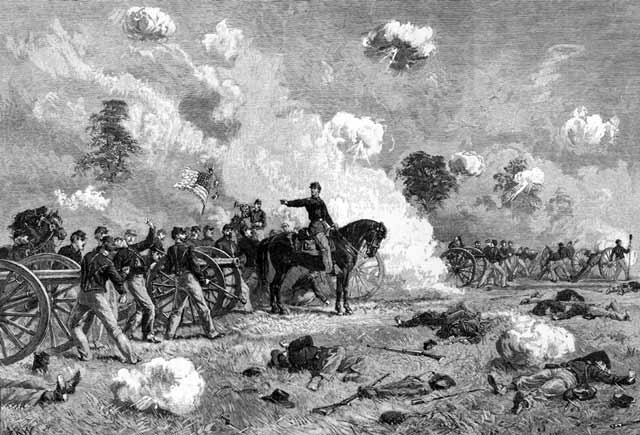
Men of Company E, 4th U.S. Colored Infantry, at Fort Lincoln, District of Columbia, circa 1864
Neil Faulkner Archive | ETOL Main Page
Published online by Counterfire, 12 April 2011.
Copied with thanks from the Counterfire Website.
Marked up by Einde O’Callaghan for the Encyclopaedia of Trotskyism On-Line (ETOL).
One hundred and fifty years ago today North America saw the start of a revolutionary war fought between rival systems and opposing political ideologies. Neil Faulkner looks at The American Civil War.

Men of Company E, 4th U.S. Colored Infantry, at Fort Lincoln, District of Columbia, circa 1864 |
When the guns opened fire on Fort Sumter on 12 April 1861, most Americans thought the war would be over before the summer was out. President Abraham Lincoln called for 75,000 militiamen to serve for 90 days. That, he reckoned, would be enough to crush the domestic rebellion in the Southern states against the elected federal government in Washington.
By the time it ended, four years later, 620,000 Americans were dead – more than in all the other wars in US history combined. What pushed the cost so high were the issues at stake. For the American Civil War, which started 150 years ago this month, was the pivotal event in the history of the United States – a revolutionary war to complete the work of the War of Independence and to decide which of two incompatible social systems was to dominate the North American continent.
Charleston, South Carolina, recently hosted a hundred-dollar-a-ticket ball to commemorate the 150th anniversary of the state’s secession from the Union. Commenting on the Sons of Confederate Veterans’ ‘Secession Ball’, one of the organisers explained that it was a celebration of the South’s ‘just and honourable cause’.

Jefferson Davis |
That cause, it is claimed, was ‘states’ rights’ and ‘self-government’. This is purest hokum. The eleven states that seceded to form the rebel Confederacy took their legal stand on a supposed constitutional right to withdraw from the federal union formed during the Revolutionary War (1775–1783). But they did it now for a reason: they had lost the 1860 presidential election to a ‘black’ Republican.
The Southern leaders had no doubts about the reasons for secession and war. ‘The undying opposition to slavery in the United States means war upon it,’ explained Confederate President Jefferson Davis, ‘and the time is at hand when the great battle is to be fought between the defenders of constitutional government and the votaries of mob rule, fanaticism, and anarchy.’
Confederate Vice-President Alexander Stephens defined the new nation’s raison d’être as follows: ‘Its foundations are laid, its cornerstone rests upon the great truth that the negro is not equal to the white man; that slavery, subordination to the superior race, is his natural and moral condition.’
Slavery was the issue on which men fought and died through four bloody years of ferociously contested civil war. There are military reasons for the war’s intensity and duration – the vastness of the spaces, the dense wilderness across so much of it, the primitive communications, the killing-power of modern weaponry, and the ability of mass-production industry to equip and supply huge armies. But the biggest reason of all is that it was a revolutionary war to decide what sort of society the United States was going to be.
The 1860 election had been one of the most polarised in US history. The Republican programme expressed the aspirations of the fast-growing capitalist economy of the North and the fast-expanding pioneer communities of the West. Central planks were higher tariffs to protect US industry, free farms for new settlers, and government subsidies for railroad construction.
The slogan was ‘Free soil, free land, free labour’. ‘The free labour system,’ explained Lincoln, ‘opens the way for all – gives hope to all, and energy, and progress, and improvement of condition to all.’ This was the rhetoric of a young, confident, forward-looking bourgeoisie – and, if needs be, a revolutionary one.
The South, by contrast, was a conservative agricultural society whose prosperity was largely dependent on export earning from a single commodity: cotton. Yet the South, like the North, was booming. As the textile industry expanded in New England, Britain, France, and elsewhere, the demand for, and price of, cotton soared.
In 1800, cotton exports had been worth $5 million and represented 7% of total US exports. By 1860, it was $191 million and 57% of US exports. While mill-owners, mine-bosses, and railroad operators grew rich in the North, the traditional planter-aristocracy also grew rich in the South.
The differences were many. Tariffs meant protection for Northern industry, but higher prices for Southern consumers. Westward expansion was fed mainly by Northern pioneers. Railroad subsidies enriched Northern capitalists, not Southern planters.

Abraham Lincoln |
Here were two economic systems, two social orders, two types of ruling class with different needs and rival demands, strapped together in a single polity. And one issue became the prism that concentrated the growing antagonism and turned it into a mighty conflagration: human slavery.
The wealth of the Southern plantations depended on the labour of four million black slaves. The Republican Party contained a radical wing that was abolitionist. But it was Lincoln, a relative moderate, who said, ‘A house divided against itself cannot stand. I believe this government cannot endure, permanently half slave, half free.’
Lincoln won only 40% of the national popular vote in the 1860 presidential election, but he carried almost every county in the Upper North, and won a clear majority of 54% across the North as a whole. Throughout the South, by contrast, his vote was minimal, and largely restricted to Unionist enclaves like West Virginia and East Tennessee.
Northern abolitionists had no doubt about the significance of what had happened: ‘The great revolution has actually taken place,’ wrote Charles Francis Adams. ‘The country has once and for all thrown off the domination of the slaveholders.’
The struggle that resulted was a long and bloody one because it was a revolutionary war fought between rival systems and opposing political ideologies; no compromise, no negotiated settlement, no happy half-way house was open to Americans as they embarked upon their violent feud in the spring of 1861.
The stakes were irreducibly high for both sides: for the North, the survival of the Union, a unified national economy, and policy geared to industrial growth; for the Southern elite, the defence of slavery, the foundation-block of their social order.
The logic of the struggle soon drove Lincoln and the moderate Republicans towards emancipation. Slave labour freed white men for service in the Confederate cause, whereas escaped slaves could be turned into Union soldiers. A war against slavery, moreover, would make the struggle for the Union morally unimpeachable, wrecking any chance of European backing for the South, and enlisting the passion of abolitionists and the slaves themselves in the nation’s ‘fiery trial’.
Lincoln came to the conclusion that ‘we must free the slaves or be ourselves subdued’. Implicit in the Emancipation Proclamation issued in September 1862 was a redefinition of US democracy. ‘As I would not be a slave,’ said Lincoln, ‘so I would not be a master. This expresses my idea of democracy. Whatever differs from this, to the extent of the difference, is no democracy.

4th US Artillery at Gettysburg |
Very many of the men and women who won the American Civil War for the Union were inspired by this vision of ‘a new birth of freedom’. On 2 July 1863, the second day of Gettysburg, the war’s greatest battle, the end of the Union line was held by a single regiment of about 250 men. For two hours, it fought off attacks by three or four times its own numbers and saved the Union army from defeat. The commander of the 20th Maine that day was an abolitionist college professor called Joshua Chamberlain.
Just over two weeks later, on 18 July 1863, hundreds of miles away at the entrance to Charleston Harbour, a Union regiment hurled itself at the formidable defences of Fort Wagner. The attack was pressed with consummate courage, but was defeated. The colonel of the regiment was shot down on top of the enemy rampart.
The regiment was the 54th Massachusetts. Carrying the war to the heart of the slaveholders’ rebellion, it was the very embodiment of abolitionist revolution, for the 54th Massachusetts was a black regiment. The 25-year-old white colonel slain at its head was abolitionist Robert Gould Shaw.
Shaw’s bereaved father at first sought the return of his son’s body. A Confederate officer wrote back ‘we have buried him with his niggers’. Shaw’s father immediately quelled any further efforts to recover his son’s body: ‘We hold that a soldier’s most appropriate burial-place is on the field where he has fallen.’ Racist reaction had been answered by a voice of revolution.
Racism still poisons American life. Again and again, in the 150 years since the Civil War, mass struggle has been necessary to drive back the boundaries of bigotry, police brutality, and racial injustice.
The American Civil War was one giant revolutionary step in that struggle. Two-thirds of a million Americans did not die for nothing: their sacrifice ended the abomination of human slavery in the United States forever.
But racism endures, because capitalism is a class society in which the rich, to secure their rule, must foster division and discord among the exploited.
And when the third American revolution takes place – the revolution against capitalism, class exploitation, and racial oppression – the descendants of slaves will fight as equals alongside the descendants of Mexican, Irish, Jewish, and many other nationalities of immigrants who make up the melting-pot people of the United States. That is, they will fight as part of a single united working class, and with the aim of universal human emancipation.
When they do so, they can take inspiration from the men of the 20th Maine and the 54th Massachusetts in 1863.
Neil Faulkner Archive | ETOL Main Page
Last updated on: 15 February 2022